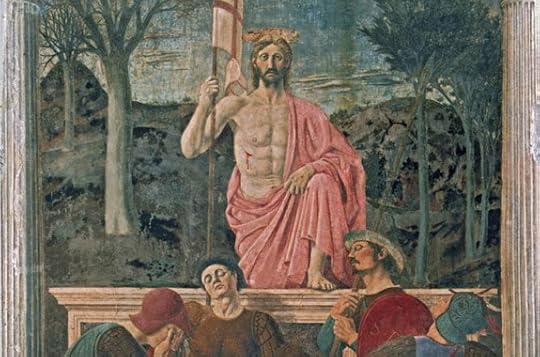Faith, Resurrection, and The Dimensions of Heaven

Detail from "The Resurrection" by Piero della Francesca (c. 1460).
Faith, Resurrection, and The Dimensions
of Heaven | Thomas M. Doran | CWR blog
Honest science and reason, seasoned
with a healthy does of humility, are never adversaries to faith.
The Resurrection stories are replete
with people failing to recognize Jesus until he says or does
something evocative, puzzling even serious Christians. Skeptics use
these appearances to suggest that Resurrection witnesses succumbed to
a kind of transference, seeming to recognize Jesus in one of his
followers, or succumbed to a wish-fulfilling delusion.
Christians counter that if skeptics
were correct, why would the chroniclers of the Gospels have admitted
that these Resurrection witnesses did not immediately recognize the
risen Christ? Why not sanitize the Resurrection stories to delete
this inconvenient fact?
Understanding the Resurrection is
beyond human comprehension, and Christians believe that getting their
minds around it completely is of little importance in relation to
conforming themselves entirely to Christ. Still, is there a way, a
coherent explanation if you will, that might give us some insight,
however feeble, into how a person could be unrecognizable while
remaining the same person, how a person could move through locked
doors, how a person could be transported instantaneously from place
to place?
Newtonian physics made no allowances
for a Resurrection event in which person might move at will across
time and space, in which he might – while remaining substantial –
pass through closed doors, in which he might be the same person who
multiplied the loaves and changed water into wine, while not being
immediately recognizable to his closest disciples. Such a Jesus was
ghostly or allegorical from the perspective of Newtonian science.
A clue to an explanation for how these
appearances might be reconciled with science and reason can be found
in the 1884 book, Flatland: a Romance of Many Dimensions, by
the mathematician and theologian, Edwin A. Abbott, who uses the
example of “flat” creatures that live in only two dimensions
(length and width) on a plane, or on the surface of a sheet of paper,
for example.
Carl E. Olson's Blog
- Carl E. Olson's profile
- 20 followers



